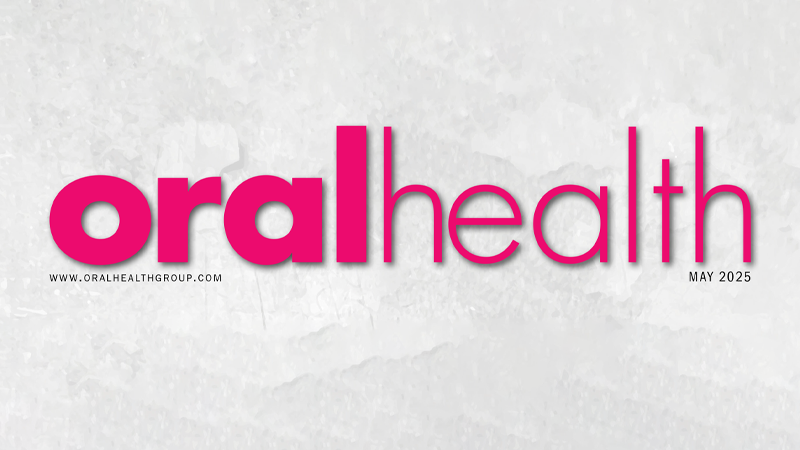
Properly trained dentists and dental specialists can dramatically improve the impact of OSA and the burden of disease on patients and the Canadian healthcare systems.
Obstructive sleep apnea is a global public health problem affecting nearly 1 billion people. The prevalence of OSA in individuals aged between 30-70 years has been estimated at 936 million individuals having OSA and of those 425 million people have moderate to severe OSA.
The prevalence of diagnosed OSA in Canada is reported to be 6.5% of our population, that is nearly 2.3 million individuals. It is interesting to note that Statistics Canada also reports that amongst Canadians aged between 18-79 there are 30% (11.4 M) who have a risk of moderate (15%) and severe (15%) OSA, as such there remains a high percentage of individuals who currently suffer from sleep apnea that remain undiagnosed. To put this in perspective, OSA is even more prevalent than ischemic heart disease (8%), diabetes (11%) or asthma (11%).
The burden of disease is very high as it is also associated with serious health risks such as cardiovascular disease, hypertension, diabetes, stroke and congestive heart failure. It also directly impacts the patients’ quality of life: daytime sleepiness, chronic sleep deprivation, fatigue, headaches, sexual dysfunction, anxiety, depression, insomnia, decline in performance at work or school, memory, concentration, ADHD, nonrestorative sleep, neurocognitive dysfunction, mental health disease, motor vehicle accidents, and occupational accidents significantly impacting public safety.
The negative impact on the quality of life, morbidity and mortality is well established. The Wisconsin Sleep Cohort, one of the largest cohort studies in Sleep Medicine evaluating the 18-year follow-up of OSA, reported significant decrease of the lifespan and survival rate to less than 60% in individuals with severe obstructive sleep apnea and less than 85% for individual with moderate disease. Furthermore, undiagnosed obstructive sleep apnea was associated with hypertension (80%), congestive heart failure (50%), and stroke (60%).
There remains a large proportion of undiagnosed OSA patients in all our practices. While Dentists cannot diagnose OSA, we have the expertise to evaluate patients’ oral, facial and airway anatomy. This expertise is essential in patient screenings to aid in diagnosis of sleep breathing disorders.
First, this can be simply achieved by including poignant questions about the patient’s medical history that are pathognomonic of OSA. Additionally sleep apnea specific questionnaires such as STOP-Bang and the Berlin Questionnaire can be made available to patients to further aid in screening and referral to a physician for definitive diagnosis with level I polysomnography (PSG), which is essential in Ontario for diagnosis of OSA by a sleep physician.
Being actively involved in promoting patients’ overall health and quality of life is fundamental for dentists, as it fosters a profound sense of loyalty, trust, and respect from their patients. When dentists prioritize comprehensive care—specifically in the treatment of obstructive sleep apnea (OSA)—they not only address a significant health issue but also enhance the quality of life for their patients.
The treatment of OSA cannot be done in isolation from sleep physicians and the importance of interdisciplinary care must be highlighted and taught in our profession. As is the case with the role of dentistry in screening and diagnosis of oral cancer, treatment of sleep breathing disorders such as sleep apnea can save lives and improve patient quality of life. It is important that as dentists we remain at the forefront of OSA treatments and establish an interdisciplinary approach to provision of care in collaboration with sleep physicians and sleep surgeons.
While PAP is well recognized as the most efficacious treatment for OSA, therapy effectiveness may be compromised when patients are unable to sufficiently adhere to therapy to obtain adequate benefit.
A key and increasingly preferred treatment modality is the Oral Appliance or Mandibular Advancement Device (MAD) therapy, involving the development and titration of an oral appliance that reduces the physiologic impact of OSA by advancing the mandible to open the oro-pharyngeal airway.
The American Academy of Sleep Medicine 2015 practice guidelines on treatment of OSA recommend that i)MAD therapy is better than no therapy at all, especially in patients who are intolerant of positive airway pressure (PAP) or non-adherent to it; and ii) MAD therapy is recommended for patients who prefer alternative therapy to PAP and in everyone with primary snoring without obstructive sleep apnea.
MAD therapy either in isolation or in combination with PAP therapy has been shown to have clear impacts. In patients who have incomplete resolution of OSA with MAD alone, combination therapy with PAP is an alternative. Furthermore, in patients who require high pressure settings on PAP therapy, combination therapy with MAD reduces the high-pressure requirements and may allow for improved patient compliance.
The treatments for OSA are evolving from a one-treatment-fits-all to an individualized, patient specific approach, with spectrum of pharmacological, non-surgical and surgical treatment options being broad and varied. MAD therapy is the most prescribed non-PAP therapy overall when considering both nonsurgical and surgical treatment options globally.
MAD therapy has also been reported to significantly contribute to reductions in systolic and diastolic blood pressure, thereby reducing the cardiovascular risks of OSA, comparable to those reported with PAP therapy.
The new practice guidelines for sleep surgery and sleep Dentistry were published in JCSM in 2021. For some patients struggling with PAP, surgery may ultimately be a more effective treatment option. When a patient refuses to use PAP or is intolerant of it sleep physicians have on obligation to refer the adult patient for a surgical consultation.
Sleep Surgery is indicated when i) patients are intolerant or unaccepting or have persistent inadequate PAP adherence ii) patients with obvious upper airway anatomic abnormalities potentially amenable to surgery as OSA treatment iii) patients with snoring and upper airway resistance syndrome.
The new recommendations reflect that referral for surgery is made earlier and per patient preference. Guidelines indicate early surgical referral PRIOR to medical therapy in those patients that have major anatomic obstruction on initial evaluation, such as tonsillar hypertrophy or significant maxillomandibular deficiencies. Patients with moderate to severe OSA who do not wish to have PAP therapy, can be referred directly for surgical consultation for management of skeletal and soft tissues. Maxillomandibular surgery (MMA), is a highly effective, predictable and safe treatment. It has a favorable risk-benefit ratio and has additional benefits than improvements observed for OSA patients who were adherent to CPAP therapy.
With the rise in the diagnosis of sleep breathing disorders, in particular OSA, and the realm of treatments rapidly changing, it is vital that our educational systems and practice guidelines adapt to meet the needs of our patients.
Undergraduate training: By integrating the fundamentals of sleep medicine into our undergraduate dental educational programs, we can equip our students with the knowledge and skills necessary to address OSA. This not only enhances their clinical capabilities but also significantly improves patient outcomes and quality of life.
Continuing dental education training: By providing comprehensive courses in dental sleep medicine that are designed to foster expertise in managing sleep-related disorders, allowing dentists to contribute to this critical area of healthcare.
National guidelines and minimum requirements to practice dental sleep medicine: For dentists who would like to implement dental sleep medicine into their practice, a 40-hour course to develop the necessary fundamental knowledge and treatment guidelines for management of OSA in collaboration with sleep physicians. Currently such practice guidelines exist in dental colleges in the provinces of British Columbia, Alberta, Quebec and Nova Scotia but not Ontario or the remaining provinces or territories.
Collaboration with sleep physicians: Through an interdisciplinary approach to patient care for management of OSA, dentists in collaboration with sleep physicians, sleep surgeons, and primary-care physicians can save lives, improve patients’ quality of life and dramatically reduce the the burden of disease on the population and the Canadian healthcare system. 
Oral Health welcomes this original article.
About the author

Dr. Meisami is a Maxillofacial and Sleep Surgeon and the Director of Sleep Medicine at University Health Network, Division of Dentistry, Toronto Rehab Institute where she is also the founder and director of Surgical and Dental Sleep Medicine Fellowship. Dr. Meisami is an assistant professor at University of Toronto, and an Adjunct Assistant Professor at McMaster University, Division Medicine, where she is involved in providing Surgical and Dental Sleep Medicine training for the Clinical Fellowship Program in Sleep Medicine. She has lectured extensively on the topic of Surgical Treatment Modalities for OSA in Canada and the US. She was appointed as a Board Member at the Canadian Sleep Society.











